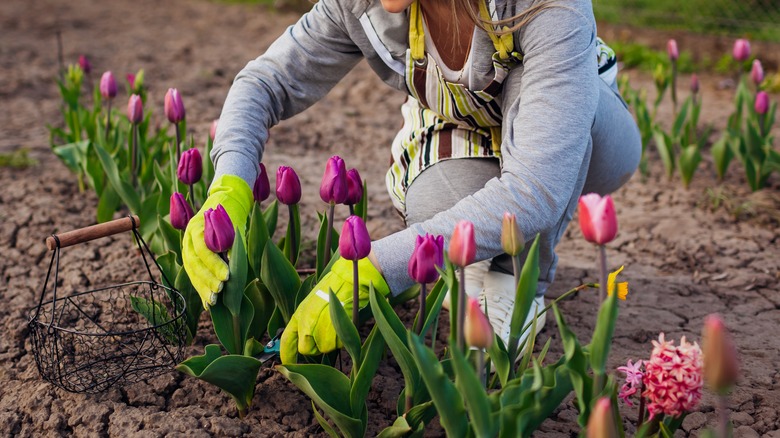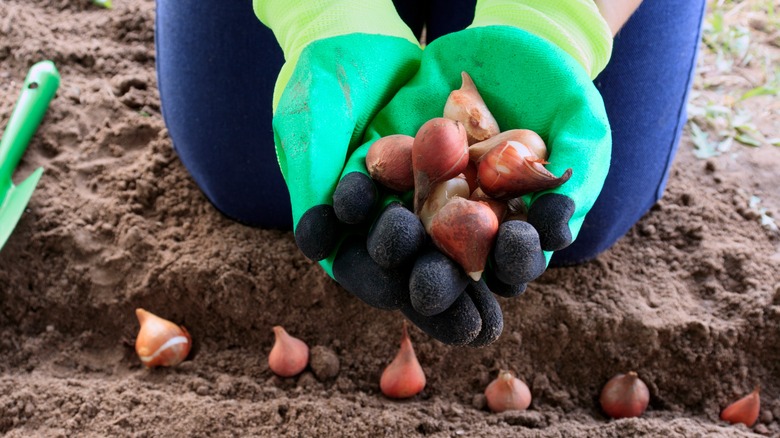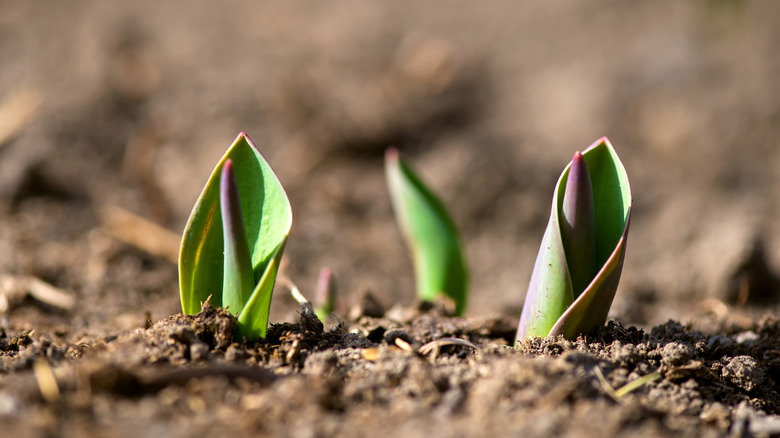Are Your Spring Tulips Perennials Or Do You Need To Replant Bulbs Now?
Tulips are perennials, which means they should come back year after year, but that doesn't always happen. Most often, the first planting of these spring favorites yields good results, with most bulbs doing well for even first-time gardeners because they require very little support. The problem is, in the coming years, you may find that they haven't come back as well as the first year, so you replant them.
While you can certainly plant new bulbs in the fall for next spring, you can also take a few steps to help support the existing tulip bulbs' growth and development in the years to come. Even with some extra support, tulips are quite temperamental because they're not native to the U.S., though they've been present in the region for hundreds of years. In areas where they are more native, they are still rather finicky about the growing conditions, and some growers use highly specialized processes involving heat and humidity control. While that's not a practical solution at home, there are some ways you can support better production of your tulips over time.
At the same time, though, you may want to boost your flower garden's bulbs by adding more tulips in the fall for spring growth. To do that, be more specific about the type of tulips you buy, and then be sure to create a sandy, rich soil that can help support their development and ability to multiply year after year.
Choose the right tulips for planting as a first step
If you have spring tulip perennial goals, you'll want to start by selecting a variety that's more likely to propagate. For example, some tulip bulbs will state that they are perennializing or that they are naturalizing. That means those particular bulbs will likely come back and multiply over the years, which is ultimately what you need to happen to have a flourishing tulip garden.
When comparing numerous products, always look at the details. The best products are cultivated bulbs, such as botanicals and hybridized strains. What makes these different is that they haven't been as cross-bred as other versions, and that means they are much more like the natural bulb, one that is more adaptable to the environment. Though not easy to find in all areas, you'll want to look for bulbs labeled like this (even if you have to buy them from a specialized outlet online).
By contrast, several varieties of tulips have been cross-bred specifically to improve their ability to perennialize. Again, you'll need to read the labels well, but look for Darwin Hybrids and Emperor tulips. You may also find other options in your local area that offer this same ability. It's less likely that your average retailer will offer them, but it shouldn't be difficult to be a bit more selective, if your budget allows, and buy from specialized online bulb retailers.
How to encourage tulips to flourish next year
What about the tulips you already have there, then? Here's the good news — you can often help support their specific needs with a few simple steps. Let's assume you have a quality bulb that's likely to perennialize. The next step is to provide what the bulb needs from the climate to thrive. For example, they need sun and benefit from direct sunlight. They also do better when you plant them deeper; several inches deep into the soil is best. You'll want to place the bulbs in well-draining soil because any instance in which they are sitting in water will lead to root rot, and that nearly always will prohibit growth. It's always a good idea to ensure the soil is rich in nutrients as that will help the bulbs build up energy stores for the winter months and multiple as a result. Choose a bone meal fertilizer to add to the soil once a year, either when planting new bulbs or in the fall months.
In addition to this, once the tulips bloom next year, give them a head start on the next cycle. To do that, once you notice the petals falling away, cut off the dead heads or the top portion of the plant. This allows the plant to start saving its energy in the bulbs instead of continuing to repair and grow.


